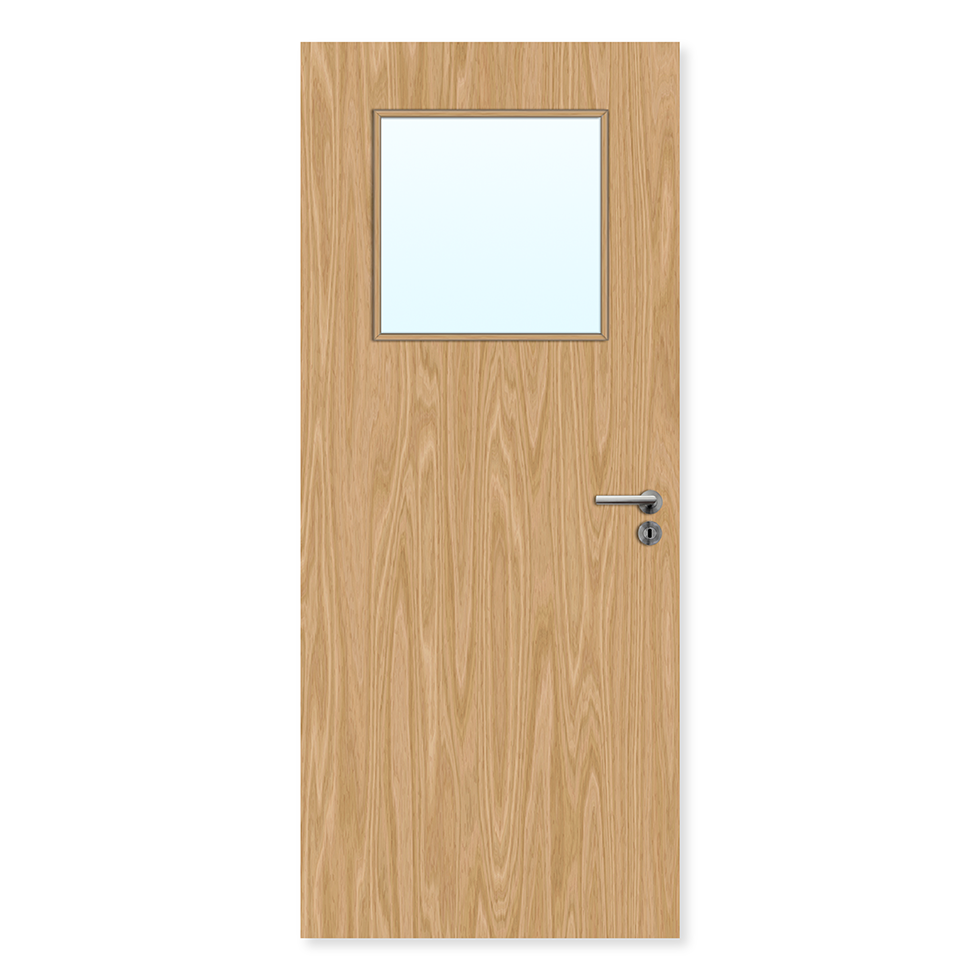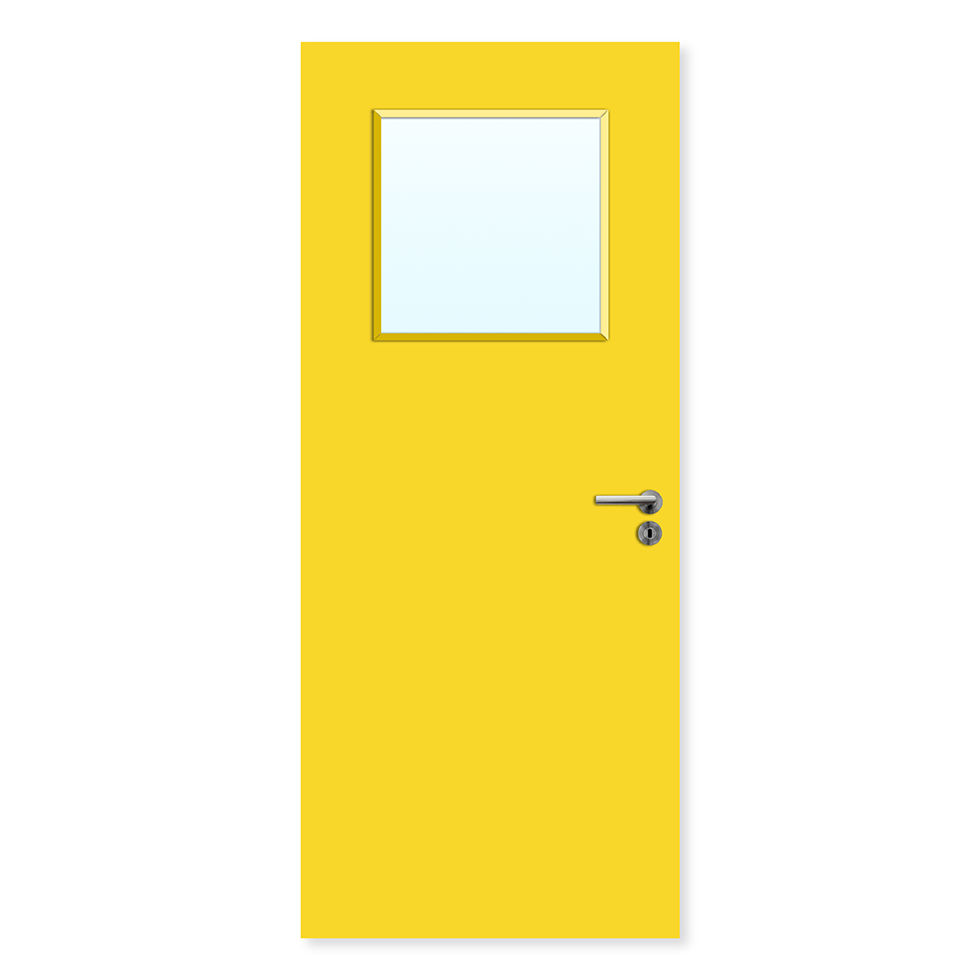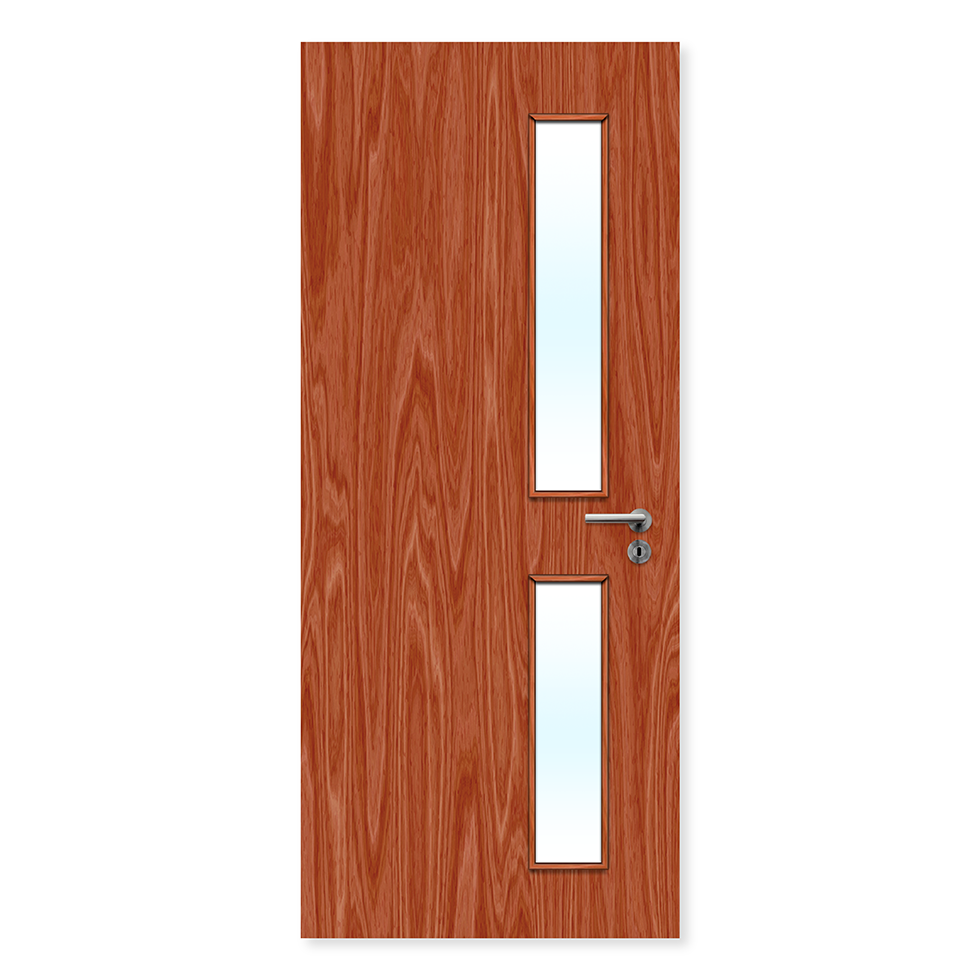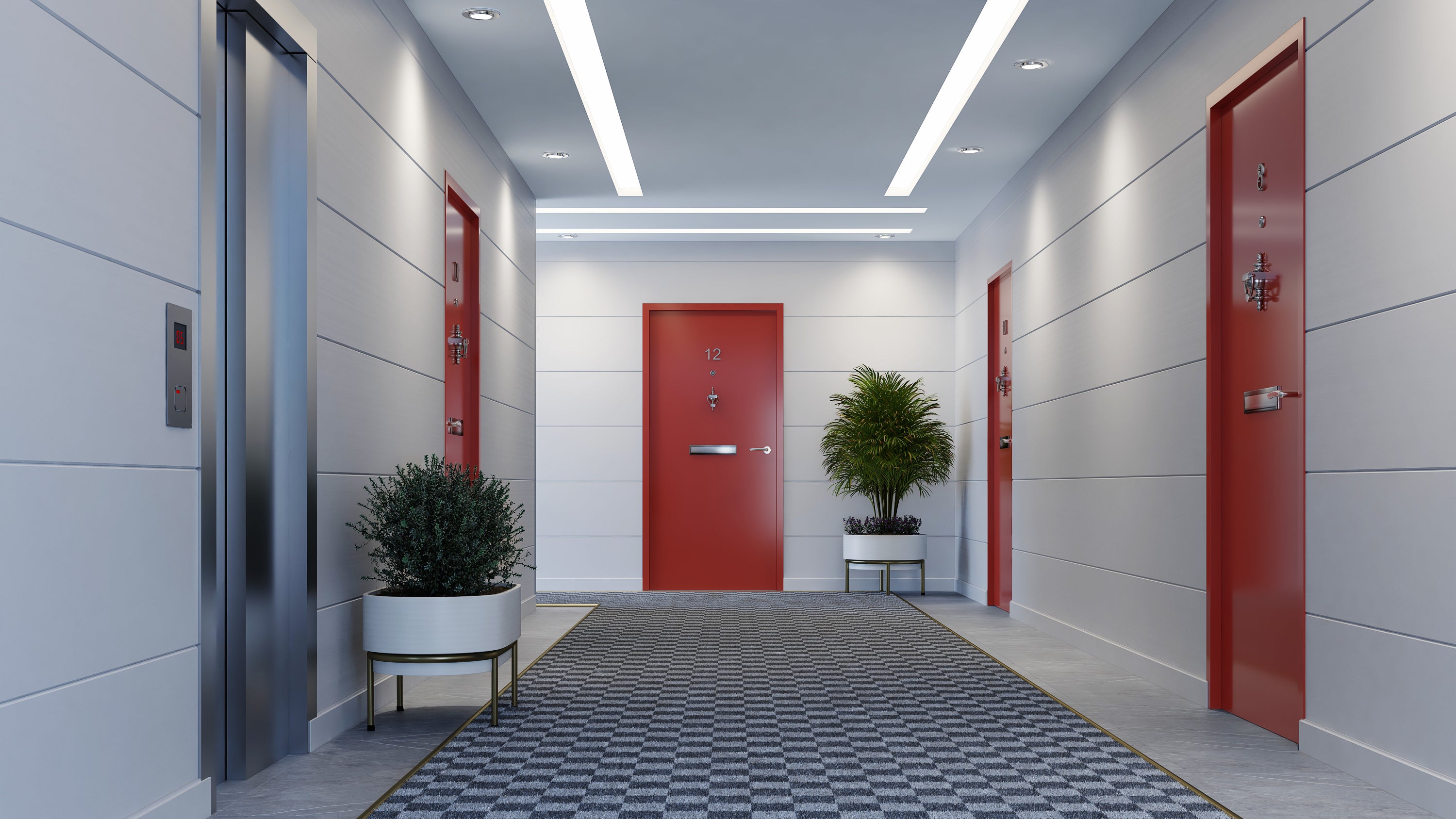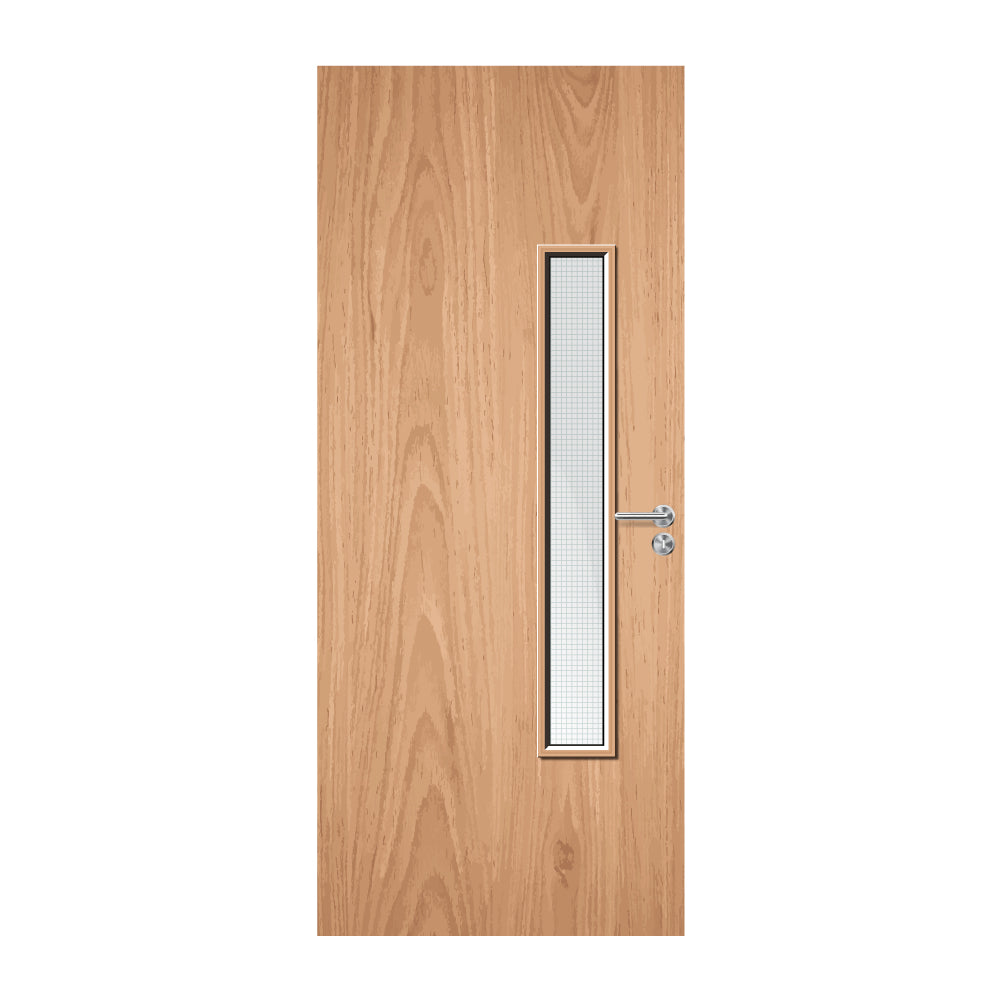Outstanding
Customer Service Second to None
Fire Door Technical Guidance
This guidance is taken from HM Governments guidance documents as part of the requirements of the Regulatory Reform (Fire Safety) Order 2005.
Effective fire-resisting doors (see Figure 63) are vital to ensure that the occupants can evacuate to a place of safety. Correctly specified and well-fitted doors will hold back fire and smoke, preventing escape routes becoming unusable, as well as preventing the fire spreading from one area to another.
Fire-resisting doors are necessary in any doorway located in a fire-resisting structure. Most internal doors are constructed of timber. These will give some limited protection against fire spread, but only a purpose-built fire-resisting door that has been tested to an approved standard will provide the necessary protection.
Metal fire-resisting doors are also available and specific guidance for these follows. All fire-resisting doors are rated by their performance when tested to an appropriate standard.
The level of protection provided by the door is measured, primarily by determining the time taken for a fire to breach the integrity (E), of the door assembly, together with its resistance to the passage of hot gases and flame.
It may be possible to upgrade the fire resistance of existing doors. Further information is available from the Building Research Establishment 67 or Timber Research and Development Association; you can also view a handy HSE Guide here.
Timber fire-resisting doors require a gap of 2-4mm between the door leaf and the frame. However larger gaps may be necessary to ensure that the door closes flush into its frame when smoke seals are fitted. Further information is available in BS 4787-1. 69 For fire-resisting purposes the gap is normally protected by installing an intumescent seal, in either the door or, preferably, the frame. The intumescent seal expands in the early stages of a fire and enhances the protection given by the door.
Additional smoke seals will restrict the spread of smoke at ambient temperatures. Doors fitted with smoke seals, either incorporated in the intumescent seal or fitted separately, have their classification code suffixed with an ‘S’. The principal fire-resisting door categories and ratings are:
● E30 fire-resisting door providing 30 minutes fire resistance (or equivalent FD 30S).
● E60 fire-resisting door providing 60 minutes fire resistance (or equivalent FD 60S).
Timber fire-resisting doors are available that will provide up to 120 minutes fire resistance but their use is limited to more specialised conditions that are beyond the scope of this guidance.
Metal fire-resisting doors:
Although the majority of fire-resisting doors are made from timber, metal fire-resisting doors, which meet the appropriate standard, can often be used for the same purpose. However, there are situations where they are more appropriate. The majority of metal fire-resisting door manufacturers will require the use of bespoke frames and hardware for their door sets. See BS EN 1634-1 36 and BS 476-2237 for more information. For detailed guidance refer to Approved Document B. 24 Ideally the frame should be to the same standard as the door, purchased together as a door set.
Door-closer:
See BS EN 1154 39 for further information. Hinges – see BS EN 1935 38 annex B. Hinges should be tested as part of the door set – see BS EN 1634-2 40 for further information. Vision panel should be fire-resisting glazing.
Door handles and locks:
See BS EN 1906 80 Annex C and BS EN 12209 77 Annex A respectively for further information. Door handles and locks should be tested as part of a door set – see BS EN 1634-136 for further information.
Securing device:
Lock, emergency exit device or panic exit device See BS EN 12209, 77 BS EN 179 44 or BS EN 1125 43 respectively for further information.
Intumescent strip and cold smoke seal:
Resist the passage of smoke and fire. Figure 63: A fire-resisting and smoke-stopping door.
Glazing in fire-resisting doors:
Although glazing provides additional safety in everyday use and can enhance the appearance of fire-resisting doors, it should never reduce the fire resistance of the door. The opening provided in the door for the fire-resisting glazing unit(s) and the fitting of the beading are critical, and should only be entrusted to a competent person. In nearly all cases the door and glazing should be purchased from a reputable supplier who can provide documentary evidence that the door continues to achieve the required rating.
Fire-resisting door furniture:
Hinges -
To ensure compliance with their rated fire performance, fire-resisting doors need to be hung with the correct number, size and quality of hinges. Normally a minimum of three hinges are needed, however the manufacturer’s instructions should be closely followed. BS EN 1935 38 including Annex B, is the appropriate standard.
Alternative door mountings:
Although the most common method of hanging a door is to use single axis hinges, alternative methods are employed where the door is required to be double swing or mounted on pivots for other reasons. Floor mounted controlled door closing devices are the most common method regularly found with timber, glass and steel doors while transom mounted devices are commonly used with aluminium sections. In each case reference should be made to the fire test report for details as to compliance with the composition of the door assembly including the door mounting conditions.
Self-closing devices:
All fire-resisting doors, other than those to locked cupboards and service ducts, should be fitted with an appropriately controlled self closing device that will effectively close the door from any angle. In certain circumstances, concealed, jamb-mounted closing devices may be specified and, in these cases, should be capable of closing the door from any angle and against any latch fitted to the door; spring hinges are unlikely to be suitable. Further information is available in BS EN 1154. Rising butt hinges are not suitable for use as a self-closing device due to their inability to close and latch the door from any angle.
Automatic door hold-open/release devices for self-closing fire doors:
These devices are designed to hold open self closing fire doors or allow them to swing free during normal use. In the event of a fire alarm the device will then release the door automatically, allowing the self-closing mechanism to close the door. Such devices are particularly useful in situations where self-closing doors on escape routes are used regularly by significant numbers of people or by people with impaired mobility that may have difficulty in opening the doors. Typical examples of such devices include:
● Electro-magnetic devices fitted to the fire resisting door which release when the fire detection and warning system operates, allowing a separate self-closer to close the door.
● Electro-magnetic devices within the controlled door closing device which function on the operation of the fire detection and warning system.
● ‘Free swing’ controlled door closing devices, which operate by allowing the door leaf to work independently of the closing device in normal conditions.
An electro-magnetic device within the spring mechanism linked to the fire detection and warning system ensures that the door closes on the operation of the system. Note: Free swing devices may not be suitable in some situations, such as corridors, where draughts are a problem and the doors are likely to swing uncontrolled, causing possible difficulty or injury to certain people e.g. those with certain disabilities, the elderly and frail, or young children.
Automatic door hold open/release devices fitted to doors protecting escape routes should only be installed in conjunction with automatic fire detection and warning system incorporating smoke detectors, that are designed to protect the escape routes in the building. In all cases the automatic device should release the fire-resisting door allowing it to close effectively within its frame when any of the following conditions occur:
● The detection of smoke by an automatic detector.
● The actuation of the fire detection and alarm system by manual means e.g. operation of break glass call point.
● Any failure of the fire detection and alarm system.
● Any electrical power failure.
Other devices, including self-contained devices which perform a similar function, that are not connected directly to a fire alarm system and are not therefore able to meet the above criteria are available and may be acceptable where a site specific risk assessment can show that they are appropriate. Such devices are unlikely to be suitable for use on doors protecting single stairways or other critical means of escape. In all cases where a door hold open device is used it should be possible to close the door manually.
A site specific risk assessment should be undertaken before any type of automatic door hold open/release device is installed. If you are unsure about the suitability of such devices in your premises, you should seek the advice of a competent person.
Further guidance about automatic door hold open/release devices is given in BS EN 1155 or BS 5839-3.
Door coordinators:
Where pairs of doors with rebated meeting stiles are installed it is critical that the correct closing order is maintained. Door coordinators to BS EN 1158 should be fitted and fully operational in all cases where the doors are self-closing.
Installation and workmanship:
The reliability and performance of correctly specified fire-resisting doors can be undermined by inadequate installation. It is important that installers with the necessary level of skill and knowledge are used. Accreditation schemes for installers of fire resisting doors are available. Fire-resisting doors and shutters will require routine maintenance, particularly to power operation and release and closing mechanisms.
For further guidance on the selection and maintenance of door furniture suitable for use on timber fire resisting and escape doors refer to The Building Hardware Industry Federation (BHIF) Code of Practice – Hardware for Timber Fire and Escape Doors.
B3 Door-fastening devices:
The relationship between the securing of doors against unwanted entry and the ability to escape through them easily in an emergency has often proved problematical. Careful planning and the use of quality materials remain the most effective means of satisfying both of these objectives. Any device that impedes people making good their escape, either by being unnecessarily complicated to manipulate or not being readily openable, will not be acceptable.
Guidance on fire exits starts from the position that doors on escape routes should not be fitted with any locking devices (electrically operated or otherwise). However, it is accepted that in many cases the need for security will require some form of device that prevents unlimited access, but still enables the occupants of a building or area to open the door easily if there is a fire. These devices can take many forms but, in the majority of cases, premises where there are members of the public present or others who are not familiar with the building should use panic exit bar devices (i.e. push bars or touch bars). See BS EN 1125 for further information. Premises that have limited numbers of staff or others who are familiar with the building and where panic is not likely may use alternative devices (i.e. push pads or lever handles). See BS EN 179 44 for further information. In some larger premises, when only staff are on the premises and there is a security issue, it may be acceptable to restrict the number of emergency exits immediately available, e.g. when only security staff are present at night, or prior to opening the premises in the morning. Staff should be made fully aware of any restrictions and the number of exits not immediately available should be limited.
Maintenance:
Under the Fire Safety Order (FSO) 2005 and now the Fire Safety Act 2021, there is a duty to maintain fire door sets in sections 17.110 & 38.1. A regular maintenance routine should be carried out referencing manufacturer instructions where necessary. Any repairs should be recorded and carried out in line with the manufacturer’s instructions.
For further guidance and technical information check our blog pages at the bottom of the main Premier site page.

